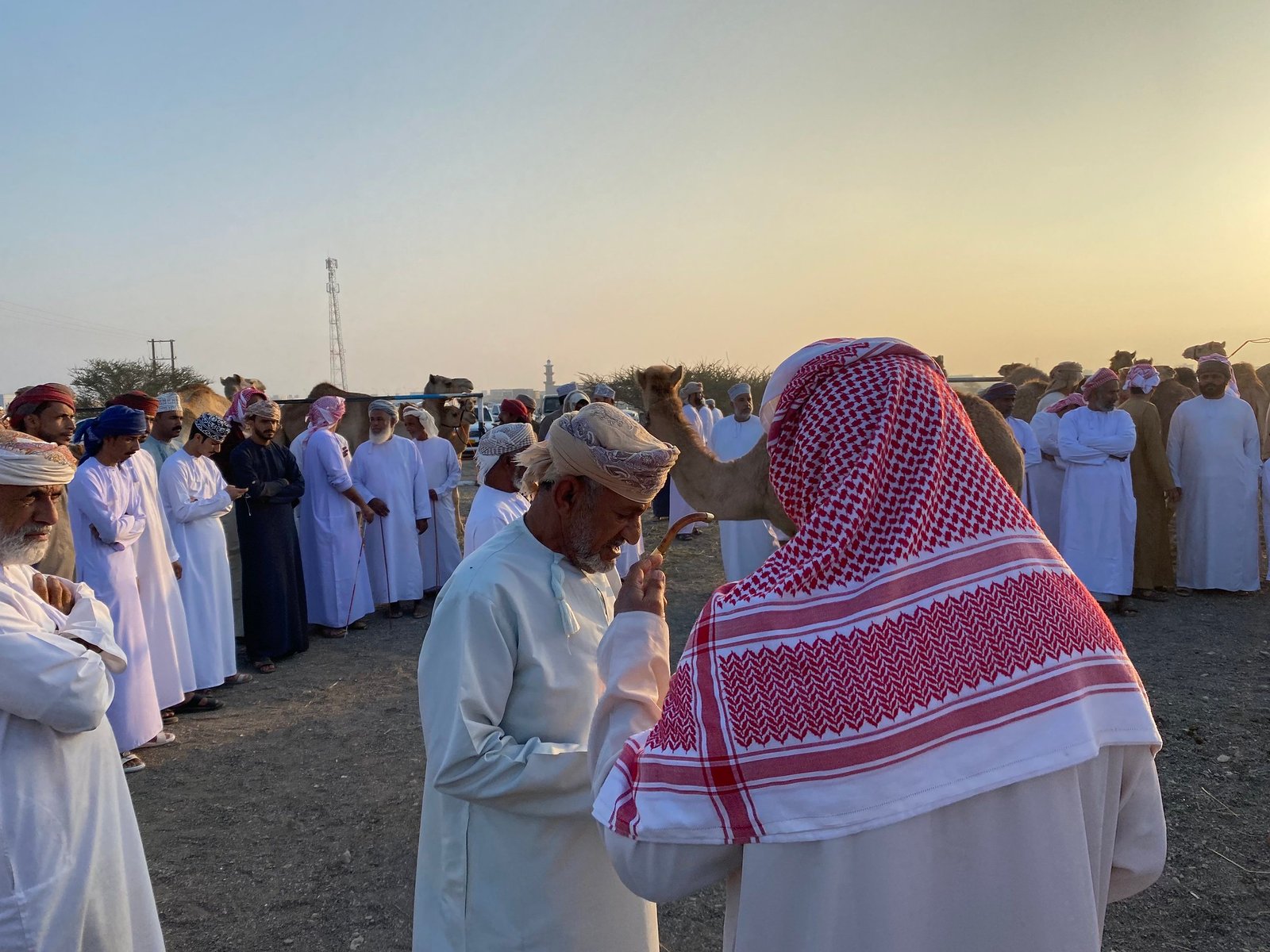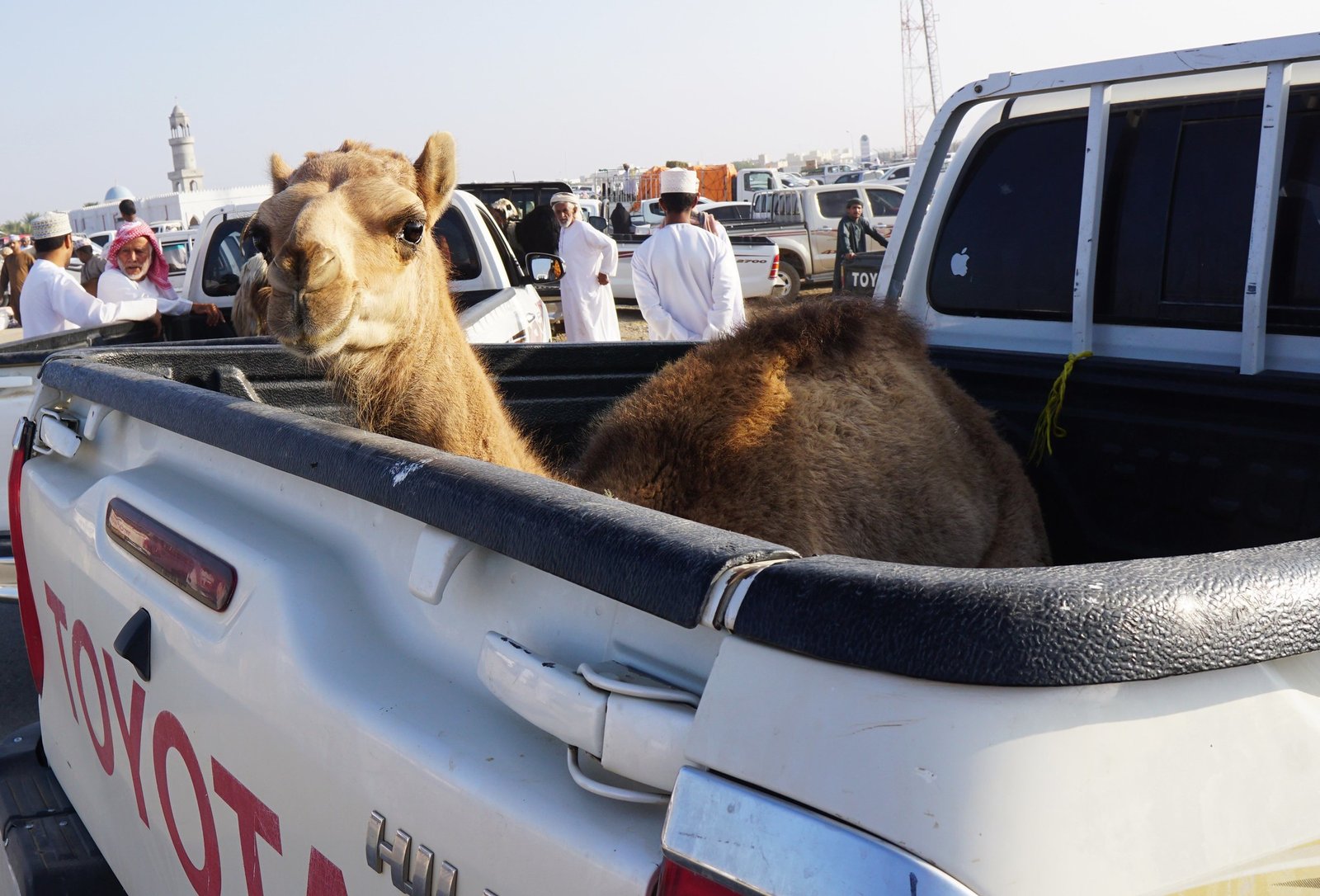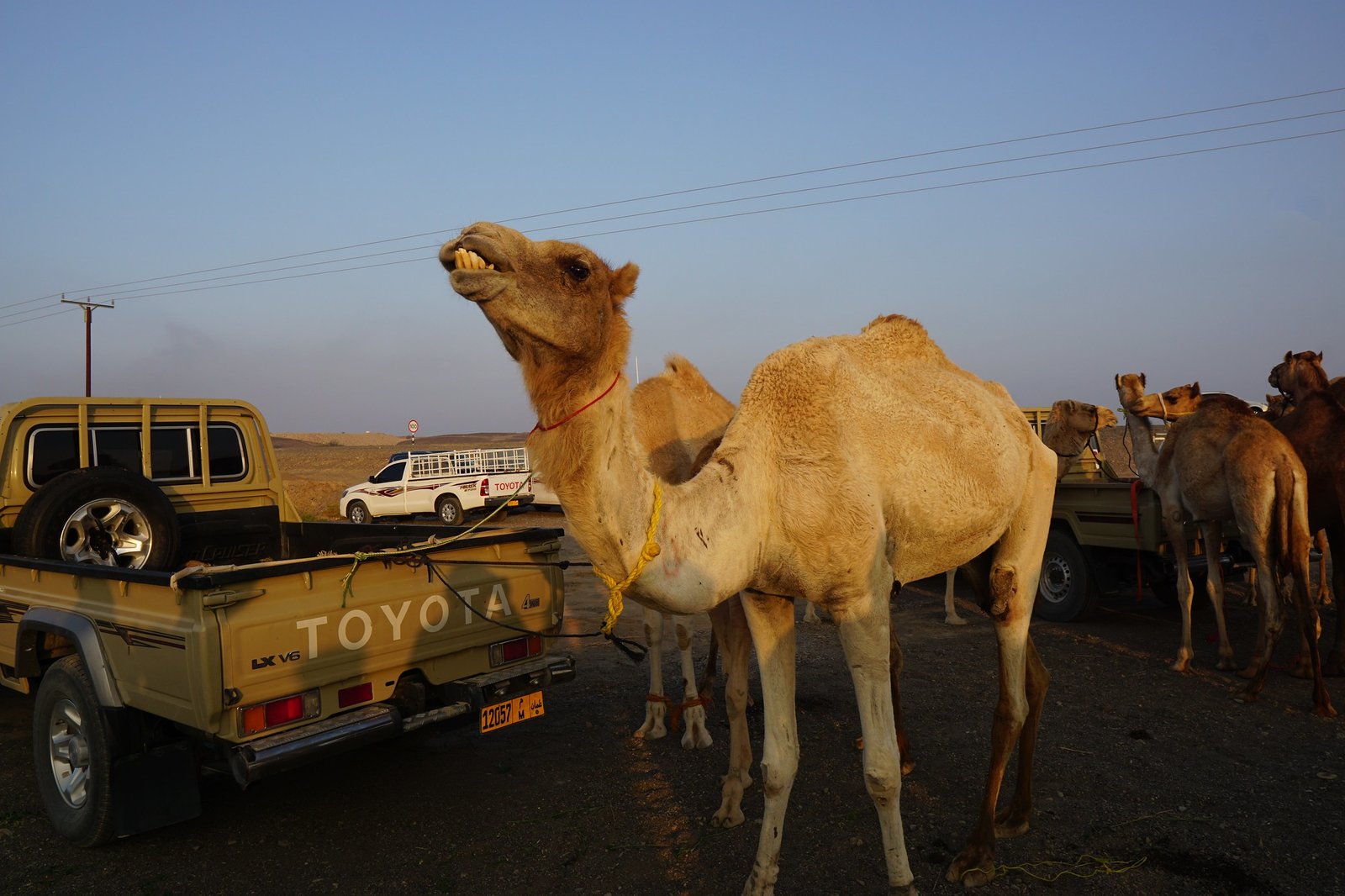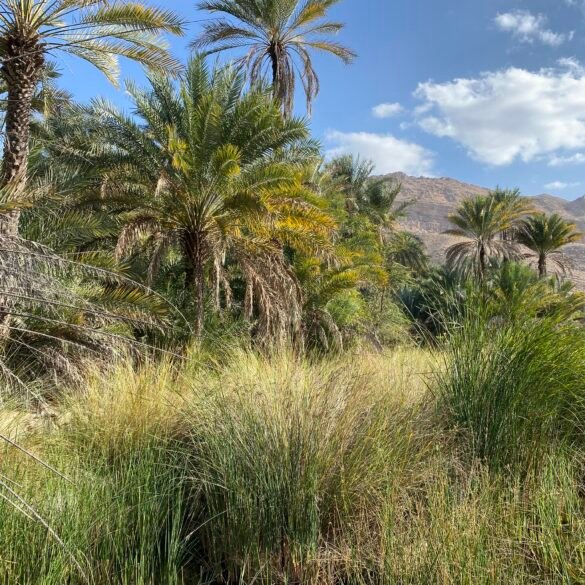It was 5 am, and we were on the move. We got up in the middle of the night to drive out of Nizwa, a lively city full of neon signs and bustling markets, towards a dusty outpost town of Sinaw in the desert. The next thing I am going to say will make absolutely no sense, but stick around and I will explain.
We were going to Sinaw to visit a market. Why would we leave a large city before sunrise to trek two hours into the desert for a market? Simple! Because it was a Thursday. And on Thursday morning, Sinaw hosts one of the most vital bazaars in Eastern Oman, where hundreds of Bedouins flock from around the country to buy and sell camels.
We knew that the camel sales start at 6 am and by 8 am all the best camels are sold off, so we wanted to get there early. For full disclosure, I will admit that I don’t know how to tell the “best camel” from the “worst camel”, and I just wanted to see some camels up close and personal. From my research, I learned that a “beautiful” camel must be tall, proportionate, and elegant, with a long nose, wide bridge, small, perky ears, and a drooping bottom lip. And I was ready to see some beauties!
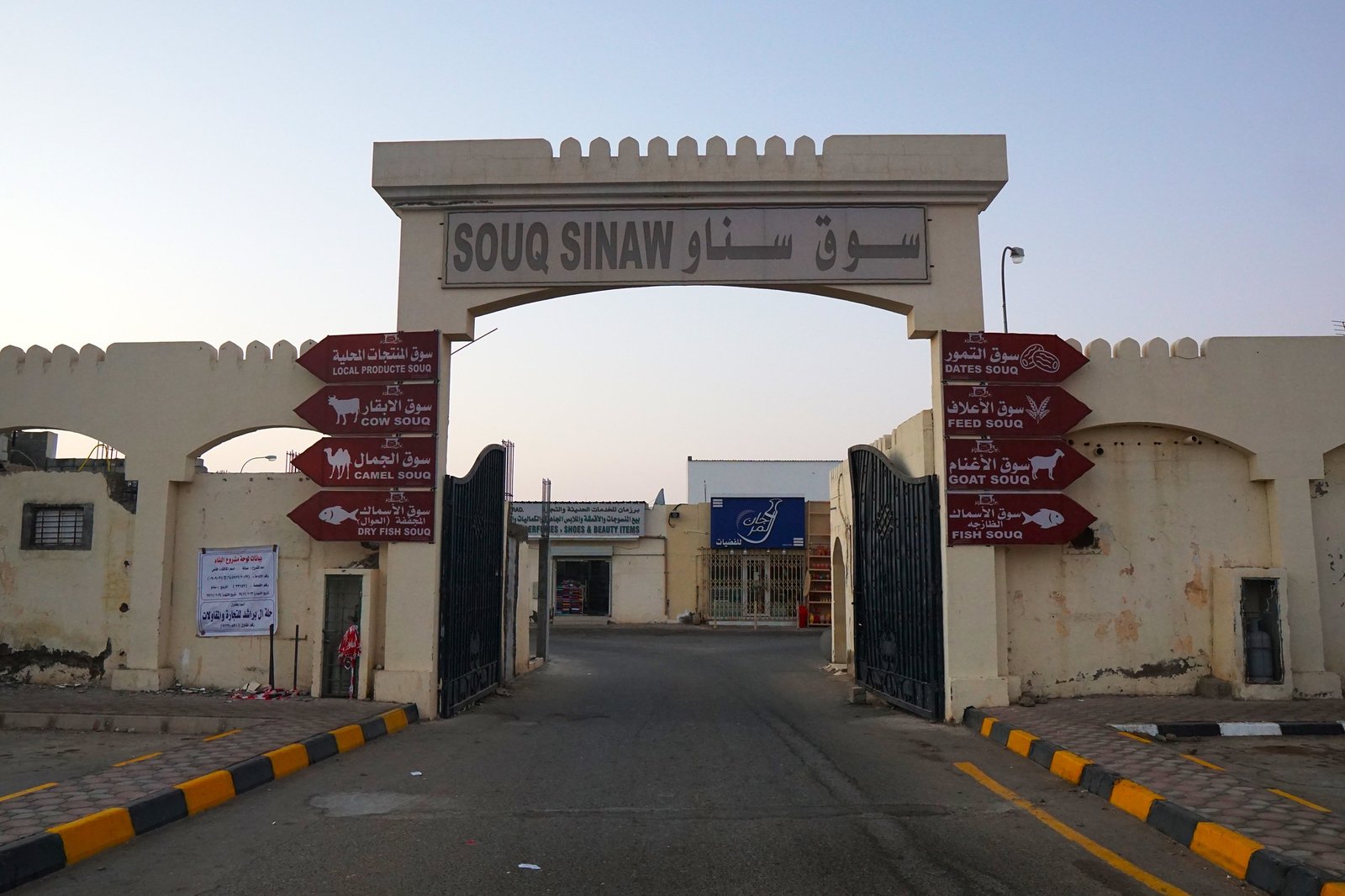
We arrived at the Sinaw Souk early Thursday morning and found the camel part of the market completely and unexpectedly empty. I tried to hide it, but I was more than a little disappointed. After walking around and taking in the smells and sights of the fish market, we decided to try finding camels. We drove around aimlessly for a while and finally came across a large gathering on the side of the road, on the outskirts of Sinaw. There were rows of white Toyota pick-up trucks (the most popular color and model of an Omani rural vehicle), a large crowd of men in long white robes and traditional headscarves, and most importantly – hundreds of camels! Giant camels, young camels, mama camels with babies snuggling close, camels of all sizes and breeds lining up to be sold, their distinctive silhouettes lit up by the early morning sun.
We parked by the row of Toyota trucks and ran to join the crowd. Men were standing around in a large tight circle in the middle of which the sellers paraded camels, calling out prices. A vast majority of these men were Bedouins, easily recognized by their headwear of a scarf with distinctive woven patterns wrapped around their heads. They were all dressed in long white dishdashas, some with jackets on top, to brave the early morning cold.
At first, I felt like I was barging in on a centuries-old ritual. We were the only foreigners there, and I was the only woman, but it was quickly made obvious that nobody minded us being there. Later, a few more tourists showed up to take selfies with camels and were ignored by the locals as well. If you were not a buyer, a seller, or a camel, no one gave you a second glance.
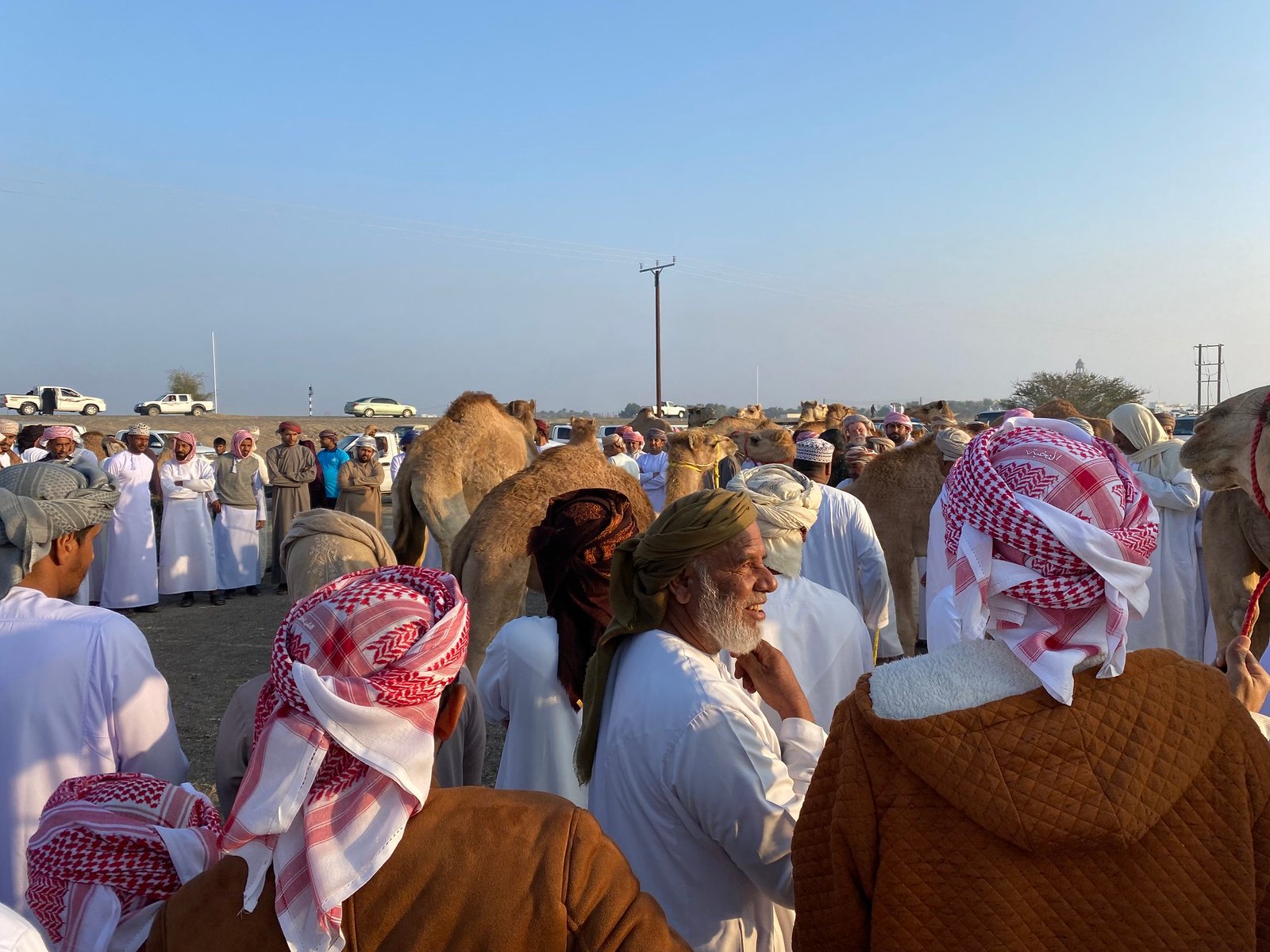
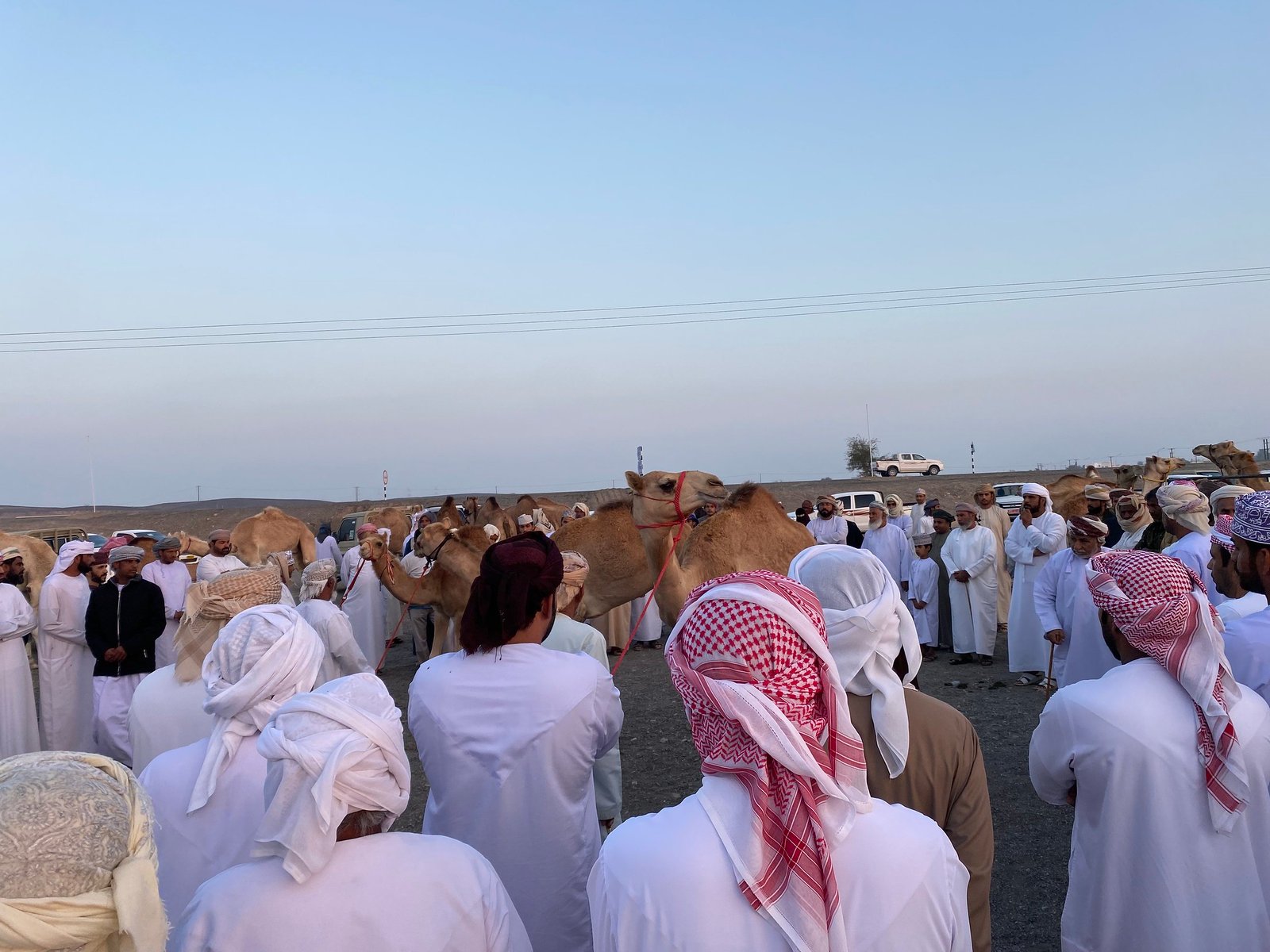
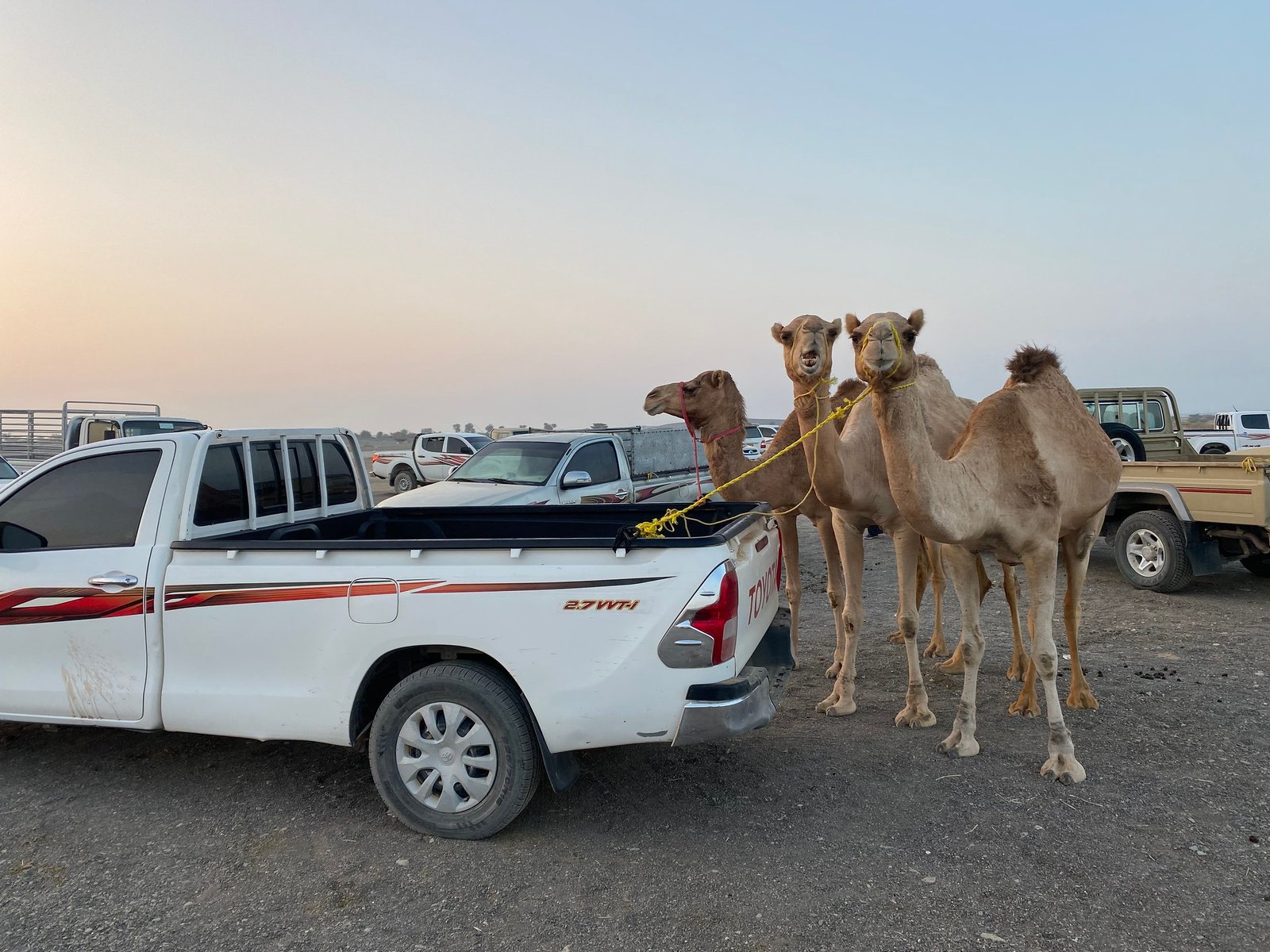
While I have seen camels before and even rode one twenty years ago in Israel, I’ve never seen so many camels in one place and certainly not so many different camels. Shy baby camels hiding behind their mamas, batting their long eyelashes at me, young adult camels annoying each other with random headbutts, and large camels watching over their territory, their muscles tense in a show of force. We decided against approaching too closely and annoying the animals too much, as we knew exactly how camels tend to defend themselves against intruders.
A few years ago in Peru, we watched an excited tourist at a bus stop run towards a llama, an animal closely related to a camel, in an attempt to take multiple close-ups of the irritated animal. The llama swung its neck back and forth and hit the ground with its hoof, but the tourist would not let up. Finally, she arched her neck back and released a stream of hot spit right into the tourist’s face. The horrified man ran away and while it was funny to watch, I was happy we didn’t share the same bus with him, as the smell that lingered around him was putrid.
While I was admiring long camel noses and droopy bottom lips from a respectable distance, potential sellers were examining teeth and hooves and carefully inspecting the animals’ walk and demeanor. Most of these camels were not being bought for their unique looks but as beasts of burden, for milk, meat, or riding. Historically, camels have been a significant part of Bedouin culture, providing transportation across arid desert landscapes. Nowadays, the most prized camels take part in the traditional Arabian camel races, held across the Gulf region. There are almost a quarter of a million camels living in Oman, a significant number in a country boasting a population of 4.5 million people.
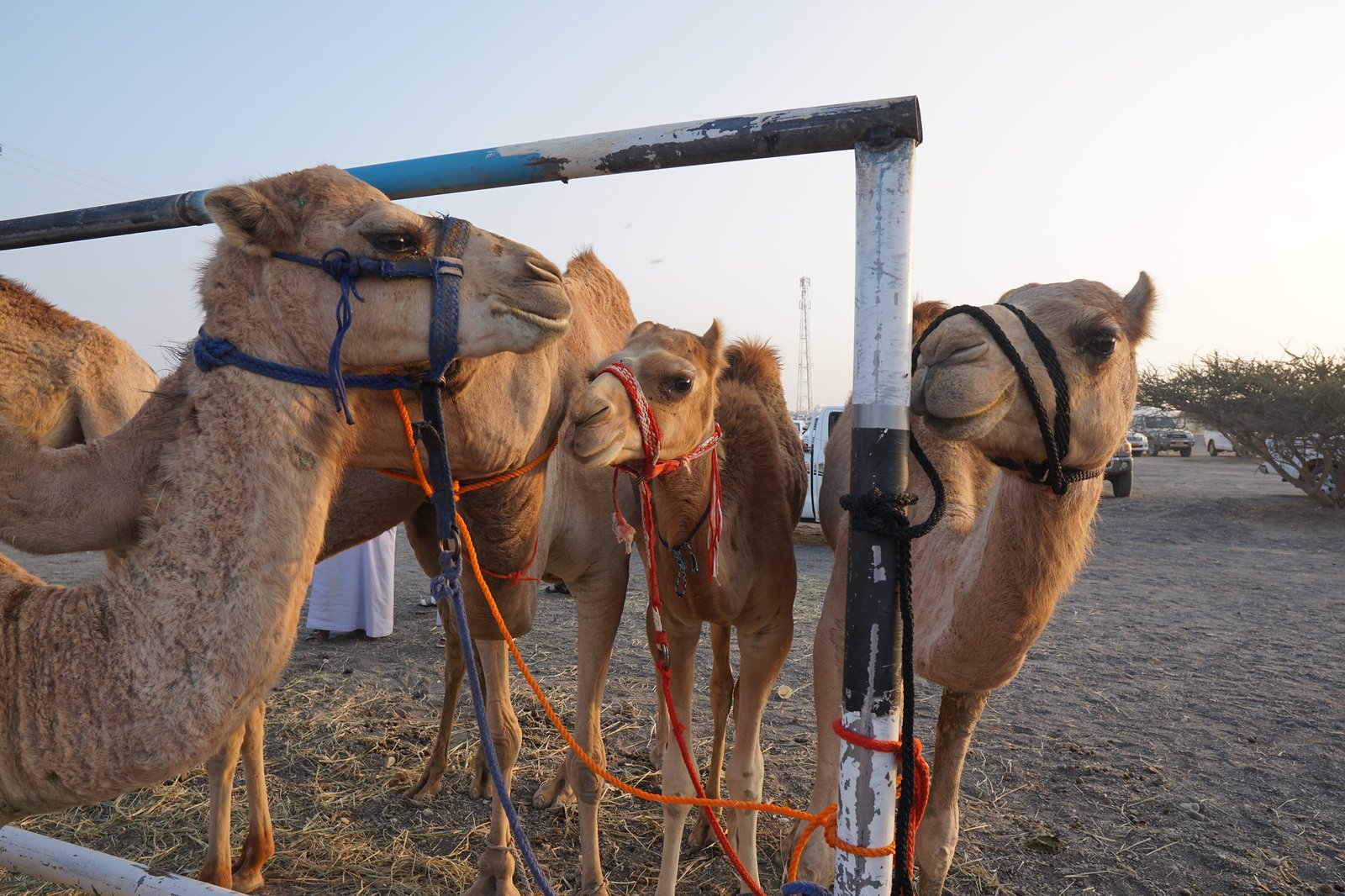
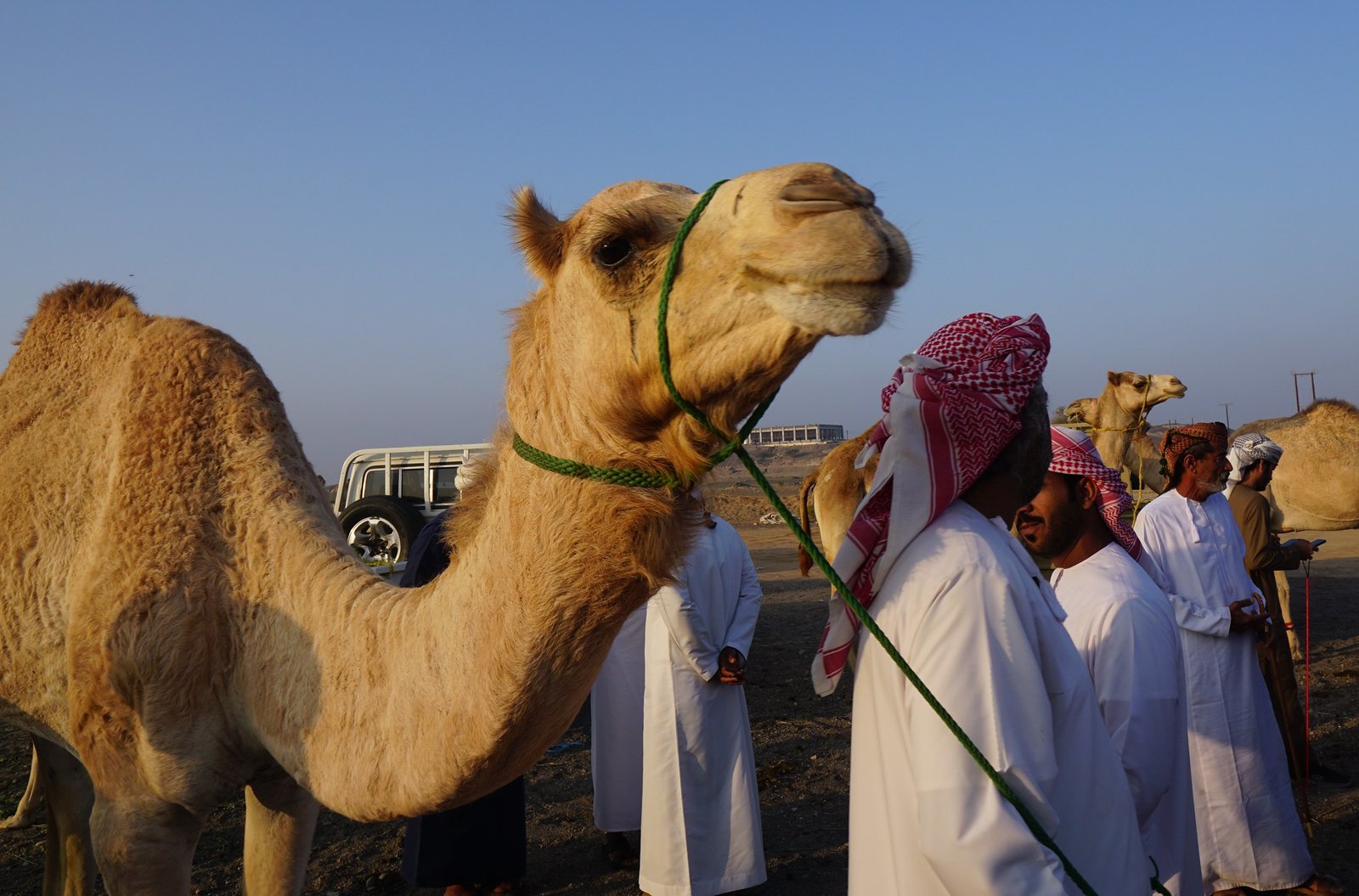
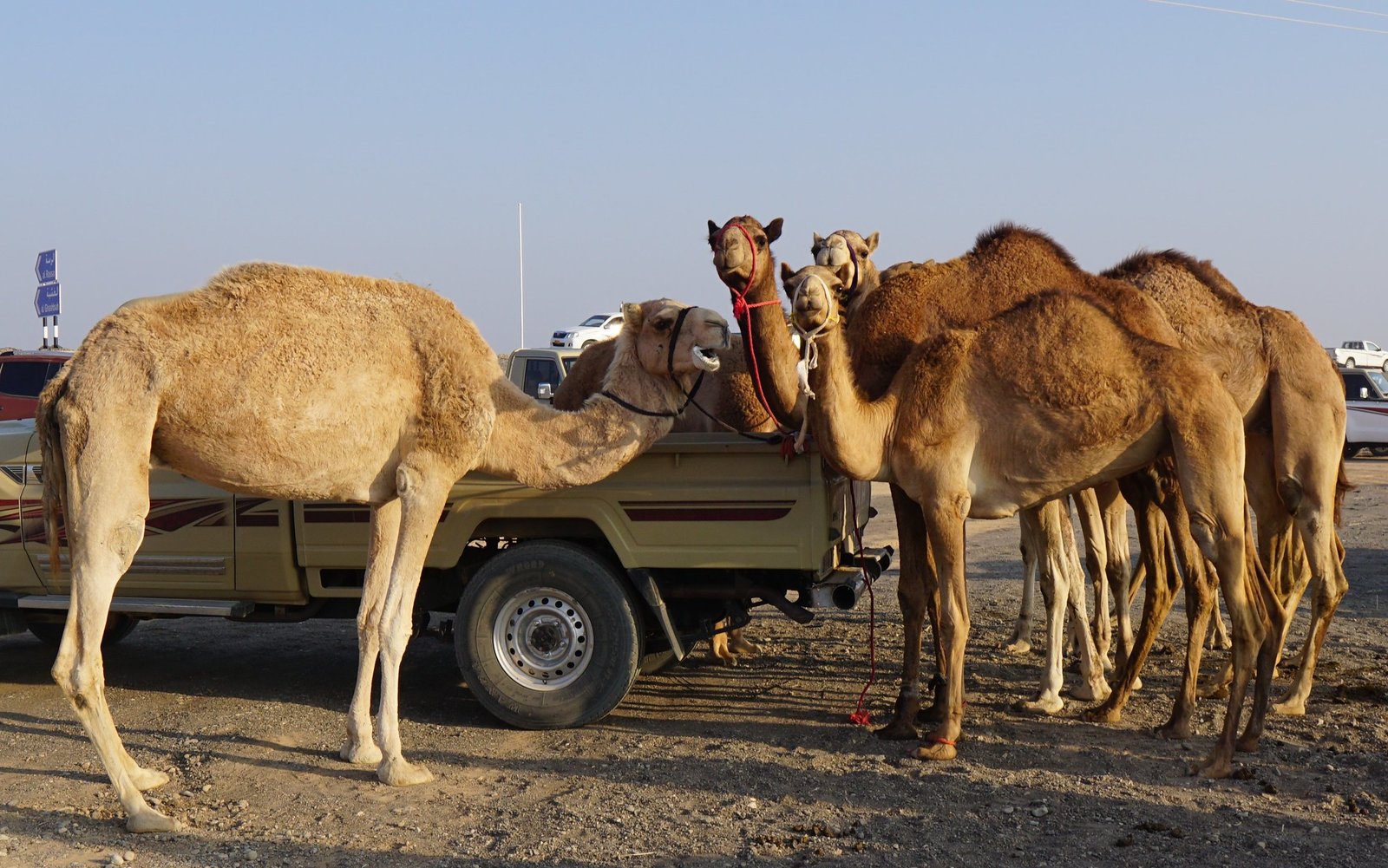
I found the process of buying and selling absolutely fascinating. There is certainly an art to the deal when it comes to haggling over camels in the middle of a desert. Men feigning disinterest, pointing out imaginary camel flaws, engaging in a delicate dance of offers and counteroffers, then finally settling on a price with a handshake while placing their hands on their hearts and lowering their heads in a show of respect and an assurance of an honest transaction.
But buying a camel does not just end with settling on a price with a display of goodwill and camaraderie. The most important part is the matter of loading the freshly bought camel into the bed of a small truck. As I mentioned before, most buyers had white Toyota pick-ups, and we watched several stumbling attempts at getting a large, stubborn camel into the truck's bed. Half a dozen men pushing, pulling, and (presumably) swearing, while the camel would dig his hoofs into the dirt and lean his gigantic hindquarters back, looking completely disinterested in joining his new owner’s household.
We spent the whole morning watching the camels, the haggling between buyers and the sellers, children darting through crowds, and listening to the cacophony of voices filling the air. After so many years of traveling, it’s not easy to find something truly unique and different. Still, here we were in a small, dusty Omani town, going through an experience unlike any other.
